Just think ...
Expert reviewers
Essentials
- Our brains are essentially complex electrochemical processors, with neurons sending tiny electrical signals to each other all the time.
- Electroencephalography (EEG) is a way to measure these electrical signals.
- Understanding the patterns of the brain’s electrical activity can provide insights into psychological states and brain disorders.
- Machine learning algorithms can use EEG data to develop applications where we can control objects simply by thinking.
Would you feel safe if the driver in the lane next to you was using just their mind to control their car? No hands, just … thinking about it?
But how on Earth could this even be possible? It all comes down to understanding the control centre of our bodies—our brains—and how they work. Everything we do, every decision we make, every action we take happens because our brain makes it happen. Our brains are impossibly complex systems, made up of around 86 billion neurons—specialised nerve cells—that form an intricate tangle of connections and pathways. Messages are conveyed through this system as electrochemical signals, jumping between stimulated nerve endings to pass the instructions around the various regions of our bodies.
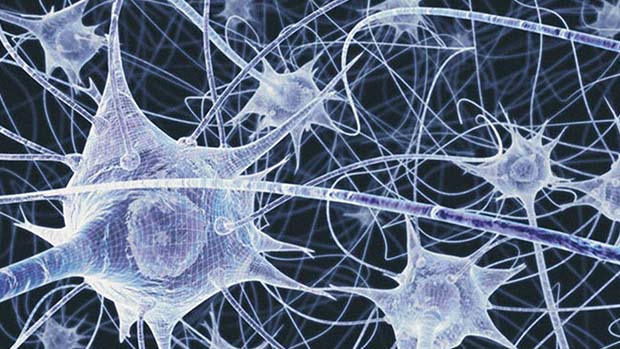
Reading the brain
There are a couple of non-invasive ways we can measure the activity constantly occurring throughout the brain. A common one that many people may have experienced is a Functional Magnetic Resonance Imaging (fMRI) scan. These scans measure changes in blood flow that result from changes in brain activity, by detecting differences in magnetism of oxygen-rich vs oxygen-poor blood (our brains need oxygen to work, so areas doing more hard work will show up as being more oxygen-rich). An fMRI scan requires the person to be completely stationary, and the necessary equipment is complicated and very expensive. The end result is a picture of brain activity where the location of the brain activity can be pin-pointed with high accuracy—the spatial resolution is high. However, the scan does not provide a high level of temporal resolution, meaning we can’t see fast changes in brain activity in real-time.
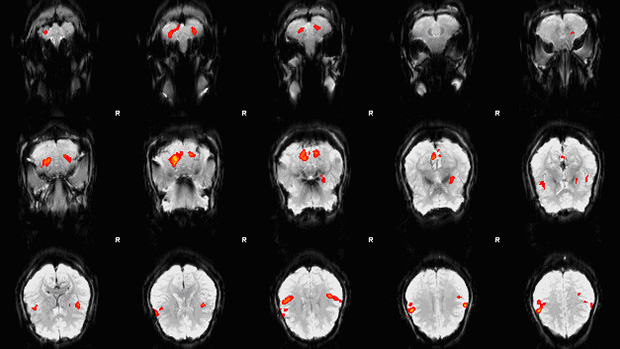
Another method is electroencephalography (EEG). Our brains process information and commands through the transmission of electrochemical signals between the neurons. While a lot of activity goes on deep within our brains, much of it is connected to the outer layer of the brain, known as the cortex. EEG is a method that measures the amplitude (voltage) of the electrical signals, in real-time, as they pass through the outer cortex of the brain.
Electrodes placed on the scalp can measure the voltages from various regions of the brain. This provides a virtually instant read out of your ‘brain-waves’ as they occur.
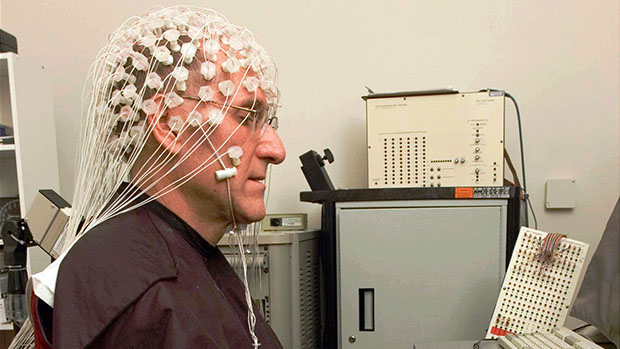
The placement of the electrodes in different locations around the scalp means we can get a rough idea of which areas of the brain are ‘firing’ and when, although the trade-off of the almost real-time resolution is that the spatial resolution is pretty low. This is largely limited by the strength of the electrical signals and distance they have to travel to be recorded by electrodes placed on your scalp.
The electrical signals created by single neurons can be up to around 80 millivolts. Considering the amount of material—other brain tissue, your skull, skin and hair—between your brain and the electrodes, it’s only signals that pass through neurons within the outer cortex that can be measured by EEG. By the time this signal is recorded by an electrode sitting on your scalp, the voltage has diminished to around 5 microvolts. This is pretty tiny—the action of blinking your eye generates a signal of around 400 microvolts. This, along with the fact that we’re really only reading the activity close to the scalp, is the reason that the spatial resolution of EEG is not very high.
The strength of the reading also depends on the synchronicity of the signals. If just a comparatively small amount of neurons are firing, then the signal will be weak. A much stronger signal is produced by the simultaneous firing of a large population of neurons all associated with a particular thought or action. The signal is also considerably amplified in order to get a reading at all. All this makes it susceptible to the background noise of lots of other electrical signals, so there’s a fair bit of software that does some filtering work before we get to see the brain-waves dancing across the screen. To improve the signal to noise ratio, it’s also necessary to take lots and lots of readings of the brain activity related to particular behaviours that can be averaged out to find the consistent signals.
Essentially, an EEG read-out is a series of squiggles, representing the changes in voltages measured by the system. Both the frequency (the number of squiggles that occur during a set time) and the amplitude (the height/size of the squiggle) tell us interesting things about what the brain is doing. The higher the frequency of the signal, the more work the brain is doing; the greater the intensity of the brain activity. The higher the amplitude, the stronger the signal—it indicates more synchronised brain activity from multiple neurons.
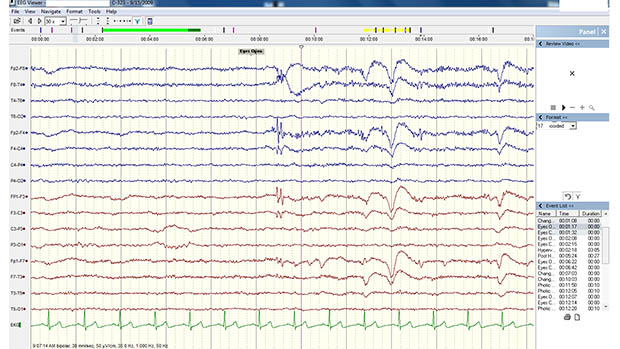
The various frequencies of brain-waves are classified into five main types.
Delta (0.5–3 Hz)
These are the lowest frequency brain-waves, and generally only occur during deep, dreamless sleep. They are usually high amplitude, because much of the brain is focused on the same activity—sleeping!
Theta (3–8 Hz)
These brain-waves also occur during sleep, and have also been induced by deep-state meditation. They may also be induced when carrying out a ‘mindless’ repetitive task, such as driving on a long, straight highway.
Alpha (8–12 Hz)
This is the ‘idle’ frequency, occurring when you’re awake but not really doing anything beyond day-dreaming or practising meditation. Aerobic exercise can also induce alpha brain-waves. Alpha brain-waves are credited with creativity and innovative ideas—a ‘brain-wave’, so to speak—showing the importance of allowing yourself time out.
Beta (12–30 Hz)
These brain-waves occur when we’re focused on something, concentrating on a problem or making decisions. These are ‘fast’ brain-waves and have been linked to depression and anxiety. Beta waves are generally representative of a time when the brain is working on several things at once—lots of neurons are in action, but their activity is not necessarily strongly connected/synchronous so their high frequency comes with a low amplitude.
Gamma (>30 Hz)
Processing information in various parts of the brain at the same time generally results in these higher frequencies of brain-waves. Gamma activity is associated with learning, and our ‘working memory’—the part of our brain that stores information temporarily and is important during decision making. Irregular gamma activity has been found associated with Alzheimer’s and Parkinson’s disease, and also schizophrenia and epilepsy.
Understanding these frequencies of brain activity, along with the locations in the brain where neurons are activated, can provide insights into a variety of mental states . It’s also useful for understanding some mental disorders, such as epilepsy—distinct patterns in brain activity can mark the onset of a seizure.
Tell us how you feel ... actually, maybe we already know
Imagine if your emotional state was constantly on display. A little ball sitting on your desk at work, that changes colour depending on how you’re feeling, letting your co-workers know when might be a good time to ask you to take on an extra mountain of work. Or avoid you like the plague. Believe it or not, this could be on its way. Tech company Emotiv are using EEG headsets and developing software to try and determine a person’s fundamental emotional state.
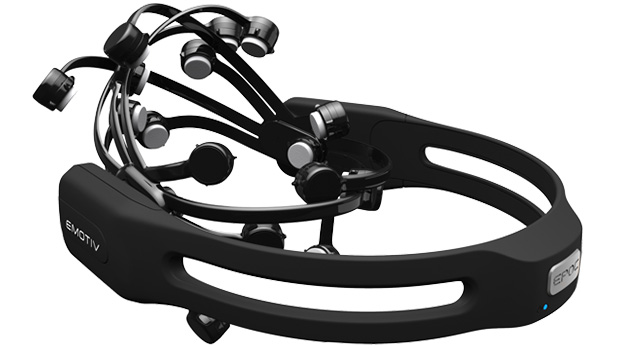
People wearing EEG headsets were subjected to various experiences designed to induce certain emotional responses. By looking at the patterns within their brain activity, researchers at Emotiv have boiled them down to six primary states that their 14-electrode headsets can identify:
- excitement/arousal
- valence/interest
- stress/frustration
- engagement/boredom
- attention/focus
- meditation/relaxation
Rather than wearing your heart on your sleeve, it’s your brain state on a screen. We could check in real-time to see how engaged you are with this very article—seeing your boredom level rise (and if we had real-time editing capabilities) we could quickly insert a picture of a cute kitten, or a bright annoying flashing GIF to grab your attention back. If you hate cute kittens and annoying GIFs, we’d then be able to see your frustration levels rise, and your valence (interest) and engagement level with the article plummet.
This has obvious applications within the entertainment and advertising and marketing industries—imagine being able to directly measure, in real-time, your audience’s engagement with your product. It would give an insight into effective storytelling like no other.
Hand in hand with this come the ethical implications of being able to ‘see’ into people’s brains and their emotional responses to stories, products or issues. The privacy and confidentiality issues are pretty complex—some types of brain scans could reveal information about people they may not necessarily want the world at large to be privy to, or may not even know themselves. Furthermore, the added insights that could be gleaned for advertising and marketing purposes, if they are actually accurate, clearly present an ethical minefield for the potential manipulation of people for commercial purposes.
Thinking is doing
The next step is to take our brain-waves and actually use them to do something. Obviously, we’re using them to do things all the time, but the technology is being developed that can use an EEG headset to read brainwaves to control an external object, say, a robot or maybe your television. To think is to do. Literally.
Although still in its infancy, this technology is pretty amazing. The potential implications in the medical and therapeutic realm, and to assist people with disabilities, are obvious. EEG systems can be used to control bionic limbs or prosthetics. A 64-channel—a headset with 64 electrodes reading brain activity—EEG device has been used by a patient with an amputated hand to control a bionic hand to control and pick up a drink bottle.
On the lighter side, commercially available EEG headsets have also been put to a variety of uses. Software algorithms can be trained to use a certain pattern of brain activity—a thought—to control a mouse, perform certain keystrokes, or control things like music volume or virtually any other electronically controlled setting. Applications have already been developed that let a video gamer control the actions of their online avatar simply with their thoughts.
So, where to from here? Well, we could be entering a new world of thought-controlled transport. By studying the brain activity of several pilots wearing EEG headsets, researchers have developed an algorithm that was successfully able to convert the thoughts to flight controls. The pilots were then able to successfully take off, land and stay on an accurate course, all within a flight simulator. It’s also been done for real—an actual plane flown purely by the power of thought. Other groups have developed the capacity to drive a car.
Our brains are extremely powerful processors, and there’s still a lot we don’t know about them. One of the next questions is what happens when we stimulate our brains to tweak these processes to enhance their power even further? Well, that’s a whole different kettle of fish. One that we'll address soon ...





